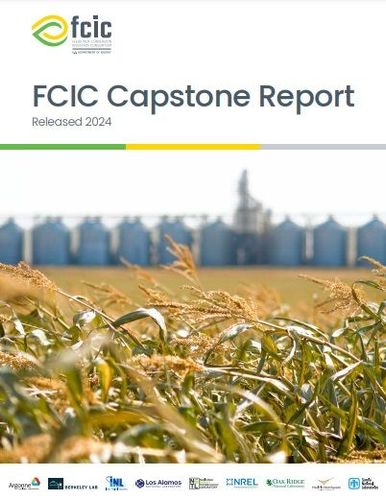DOE releases Feedstock-Conversion Interface Consortium capstone report

SOURCE: U.S. Department of Energy
January 31, 2025
BY U.S. Department of Energy
The U.S. Department of Energy Bioenergy Technologies Office (BETO) released the Feedstock-Conversion Interface Consortium Capstone Report. The report summarizes the FCIC’s goals, research activities, and achievements over the past three years.
The FCIC is a collaborative effort among researchers from nine national laboratories focused on reducing the risks feedstock variability poses to biorefineries. The FCIC has met this challenge and made an array of knowledge and tools available to industry stakeholders in the form of more than 100 publicly available scientific publications, technical reports, conference presentations, and open-source computer codes available for download.
The accomplishments of the FCIC span the entire bioenergy value chain, including areas such as:
Advertisement
- feedstock characterization
- material handling
- preprocessing
- wear analysis
- low-temperature conversion
- high-temperature conversion
- cross-cutting analysis
- data integration.
For more information, visit the Feedstock-Conversion Interface Consortium page, and view and download the Feedstock-Conversion Interface Consortium Capstone Report here.
Advertisement
Related Stories
The USDA reduced its estimate for 2024-’25 soybean use in biofuel production in its latest WASDE report, released May 12. The agency expects soybean oil use in biofuel to increase during the 2025-’26 marketing year.
HutanBio's microalgal biofuel production shown to be net-negative in an independent life cycle assessment by EcoAct
HutanBio on May 8 announced that the production process for its proprietary HBx microalgal biofuel achieves net-negative carbon emissions, based on an independent cradle-to-gate life cycle assessment (LCA) conducted by EcoAct.
According to a new economic contribution study released by the Iowa Renewable Fuels Association on May 6, Iowa biofuels production has begun to reflect stagnant corn demand throughout the agriculture economy.
Repsol and Bunge on April 25 announced plans to incorporate the use of camelina and safflower feedstocks in the production of renewable fuels, including renewable diesel and sustainable aviation fuel (SAF).
U.S. operable biofuel capacity in February was unchanged from the previous month, according to data released by the U.S. EIA on April 30. Feedstock consumption for February was down when compared to both January 2025 and February 2024.
Upcoming Events










